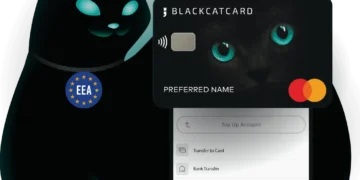We’ve all seen those corporate videos. You know the ones: slow shots of handshakes, smiling office workers, dramatic music, and vague slogans floating on the screen. They look nice. But do they do anything? Not always.
In a world full of videos, standing out takes more than good lighting and background music. It takes purpose, personality, and a proper plan.
That’s where companies like Film Division come in, using cinematic storytelling and sharp strategy to turn corporate video into something actually worth watching.
So, what makes a brand film land instead of flop? Let’s break it down.
Why Businesses Still Need Corporate Video
Even with the rise of TikTok, podcasts, and bite-sized content, video remains one of the most effective ways for businesses to connect with customers. It’s fast, visual, and memorable.
Here’s why companies keep coming back to video:
- It’s engaging – People process visuals faster than text.
- It’s versatile – Use it on websites, presentations, email campaigns, and social media.
- It builds trust – Seeing real people behind the brand makes it feel more human.
- It improves SEO – Websites with video tend to rank higher in search results.
- It explains things quickly – Complex ideas become clear with visual support.
But with all that potential, the risk is wasting it on something forgettable.
From Background Noise to Brand Voice
The problem with many corporate videos? They say a lot… without really saying anything.
To avoid that, a strong video needs three simple things:
- A Clear Message – What’s the point of the video? Is it to explain a product? Show company values? Recruit staff? A fuzzy goal leads to a fuzzy video.
- An Audience in Mind – A good video speaks directly to its viewers. That means knowing their problems, interests, and language.
- A Story That Flows – Even business videos need a beginning, middle, and end. Without it, viewers lose interest fast.
A clear message, targeted audience, and structured narrative create something that actually earns attention.
How Professional Filmmakers Make a Difference
While it’s tempting to DIY a company video on your phone, there’s a big gap between filming and filmmaking.
Experienced production teams bring:
- High-quality visuals that reflect your brand standards
- Scriptwriting support to sharpen your message
- Sound design and music that elevate emotion
- Editing expertise to keep the pace tight and focused
- Strategic input on how to use the video post-launch
This is where creative agencies bridge the gap between corporate needs and cinematic storytelling. They understand both the brand’s voice and the viewer’s attention span, which makes all the difference.
Types of Corporate Video That Work
Not every business video needs to be a full-on film. Different formats serve different goals. Here are a few types that actually work:
1. Brand Overview Videos
These are perfect for showing who you are and what you stand for. A mix of team interviews, customer testimonials, and footage of your work in action can paint a full picture of your business.
2. Explainer Videos
Great for products, processes, or services that are tricky to describe. These often use voiceover, animation, or simple demos to walk the viewer through a topic.
3. Event Highlights
Filming a conference, launch event, or company gathering? Recap videos make great social content and internal morale boosters.
4. Recruitment Films
Want to attract top talent? A peek inside your work culture, from team lunches to day-in-the-life snippets, can be a powerful magnet.
5. Testimonial Videos
Let happy clients speak for you. These build credibility and can be used on landing pages, proposals, or case studies.
Making It Personal Without Being Cheesy
A common trap with brand videos is trying too hard to look polished. In the process, they lose authenticity.
The best videos feel like a conversation, not a script being read under pressure. Real moments, real people, and real values resonate far more than stock footage and buzzwords.
Here’s a simple trick: ask your team or clients questions that spark emotion or opinion. “What’s your favourite thing about working here?” will always land better than “Describe our mission statement.”
Where to Use Your Video for Maximum Impact
Once your video’s done, don’t just post it once and forget it. Get it working across your digital footprint:
- Homepage banners – First impressions matter.
- Landing pages – Video can increase conversion rates.
- Social media – Cut longer videos into short, punchy clips.
- Email campaigns – A thumbnail linking to a video can improve open and click rates.
- Internal comms – Share wins, goals, and updates across teams.
- Trade shows – Loop a brand video at your booth.
Strategic placement ensures your message reaches the right people, at the right time.
Measuring What Matters
Video views alone don’t tell the full story. Pay attention to:
- Engagement time – Are people watching it all the way through?
- Click-through rates – Do viewers take action after watching?
- Social shares and comments – Is your message resonating enough to get people talking?
- Lead tracking – Are conversions linked to video interactions?
Tools like Google Analytics, social insights, and CRM tracking can help measure success and tweak future projects.
The Human Element in Business Video
No matter how sleek the graphics or clever the script, what people connect with is people.
That’s why the human touch, be it a team member sharing a personal story, a customer explaining their problem, or a founder showing passion, remains the most powerful tool in any video.
Even in industries that seem “boring,” real voices bring stories to life.
Final Thought: Make Them Feel Something
The goal of a corporate video isn’t just to inform. It’s to connect. That means making the viewer feel something: curiosity, pride, trust, excitement.
If your video sparks an emotional reaction, even just a smile or a nod of agreement, you’re already halfway there.
The rest is making sure it’s seen by the right people, and that starts with clear messaging, smart production, and confident distribution.
If you’re ready to stop making background noise and start telling a real story, working with professionals like Film Division could be the difference between being skipped… or being remembered.













